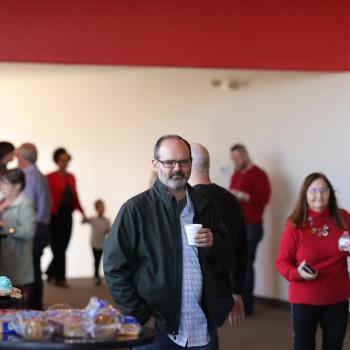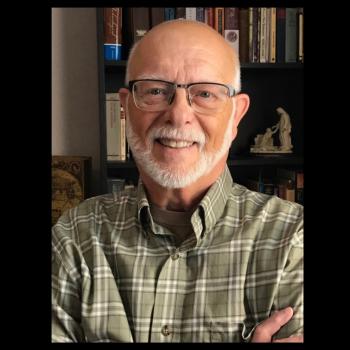Introduction and Key Themes
This research flows from an exploratory problem I pursued in partial fulfillment of the requirements for Sacraments in History, Asbury Theological Seminary. The syllabus states the problem as: “The doctrine of the ‘epiklesis’ in the Eastern Rite provides a more adequate place for the work of the Holy Spirit in worship than was found in the Western Rite.” I took the position in favor of this.
There are factors that make this line of research difficult. First the church of the East is very diverse, geographically spread out, and difficult to trace. Second the church in the West is more centralized, which is reflected in their doctrinal development. For the initial research, I found support for the epiklesis in Hippolytus, Sarapion, The Liturgy of St. James, The Liturgy of SS. Addai and Mari, and Cyril of Jerusalem.
I was in favor of the understanding of the Holy Spirit in the Eastern Rite. I also discovered that I was simply scratching the surface with research in this area. In this project I expand the research to include more primitive prayers of the Eucharist.

I discover that the East develops an understanding of the Spirit very early. I also discover that the doctrine of transubstantiation is not fully supported in the earlier liturgies. Rather there is an understanding of communion as a sacrifice made by the laity, a true thanksgiving offering, and a mystery.
This research serves to inform my own beliefs on communion.
There are themes that I (Protestant, Evangelical, Pentecostal) have learned. These themes are essential to this study, and briefly defined here.
The first of the themes is epiklesis, also spelled epiclesis
Alexander Schmemann says:
“The Orthodox Church has always insisted that the transformation (metabole) of the eucharistic elements is performed by the epiclesis – the invocation of the Holy Spirit.”[1]
As communion develops in the East, the consecration is called epiklesis.
The second theme is anamnesis
The simplest definition of anamnesis appears to be that of Robert Webber.
“God does for us in the Eucharist what God did for us in the Christ event. The remembrance is not a mere intellectual recall, as in Enlightenment theology, but an anamnesis in which the divine action of God brings to us the forgiveness of our sins and the healing of our broken lives.”[2]
The anamnesis is therefore a recalling, a representation, or perhaps a re-presenting of the Cross. Various authors will expound further.
The third one of the themes is eschatology
This is present in the Eucharistic celebration from the earliest days. Schmemann explains the eschatological nature of communion:
“in the Eucharist it is He who seals and confirms our ascension into heaven, who transforms the Church into the body of Christ and – therefore – manifests the elements of our offering as communion in the Holy Spirit. This is the consecration.”[3]
Schmemann seems to blend ecclesiology, pneumatology, soteriology, and eschatology in his formulation of Eucharist. This is not uncommon for the Orthodox tradition, from which Schmemann writes. Charles Pinnock states that Eucharist is a foretaste of the heavenly wedding banquet.
“Orthodox liturgy captures the spirit of celebration implicit in the sacrament: ‘Let us rejoice and exult and give him glory, for the marriage of the Lamb has come, and his bride has made herself ready.’”[4]
A fourth theme is the doctrine of transubstantiation
Although some claim the doctrine of transubstantiation stems from the early church, it is difficult to find it articulated until much later.
“In the ninth century, Paschasius Radbertus proposed a view of the presence of Jesus in the Mass by virtue of the miraculous change that occurred in the bread and wine. The view laid the groundwork for the doctrine of transubstantiation that became dogma at the Fourth Lateran Council in 1215.”[5]
It is my belief that one can look at the early fathers through whatever lenses one uses to perceive the rite. Perhaps transubstantiation is one extreme and Protestant memorialism is another. It is possible that the prayers of the Eucharist do indeed invoke the presence of God, and that in some way, we become witnesses to mystery.
For more on Communion from the Archives CLICK
notes:
- Alexander Schmemann, For the Life of the World: Sacraments and Orthodoxy, 2nd ed. (Crestwood, NY: St. Vladimir’s Seminary Press, 1973), 43.
- Robert E. Webber, Ancient-Future Faith: Rethinking Evangelicalism for a Postmodern World (Grand Rapids, MI: Baker Books, 2004), 134.
- Schmemann, 44.
- Charles H. Pinnock, Flame of Love: A Theology of the Holy Spirit (Downers Grove, IL: IVP Academic, 1996), 153.
- Robert E. Webber, Worship Old and New: A Biblical, Historical, and Practical Introduction, Rev. ed. (Grand Rapids, MI: Zondervan, 1994), 103.
















